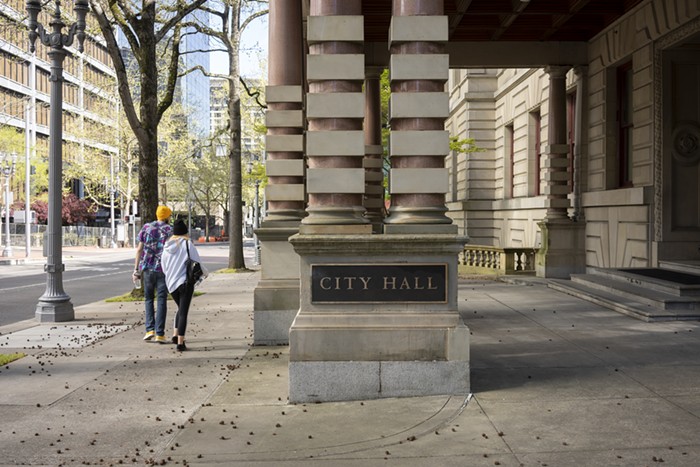When I visited Tilt last week to see Portlander Jesse Hayward's installation, One None Done, it was clear the artist was taking the gallery's role as a "project space" quite literally. Rather than display his work in a stable arrangement that would last the duration of the show, Hayward was frantically moving pieces around the space, reconfiguring the presentation. That the show will remain constantly in flux (Hayward described it as a "living exhibition") complements his work, which almost always appears in a similar state of ongoing development and revision.
To reinforce this idea, Hayward has used Tilt to create a chaotic mock studio. Fittingly, a series of his signature pod sculptures, which appeared in 2006's Oregon Biennial, occupy the floor space and protrude from the walls like phallic projectiles. They are rough and amorphous forms that call attention to their cumulative materiality. In fact, they seem to be the product of insistent layering. Without a clear sense of how a piece will ultimately appear when "finished," the final product undermines the notion of the conventional art object, functioning more to evidence the creative process. Likewise, the walls are covered in paint-smeared canvases. While the swirling paint creates a dynamic sensation, the pieces are also conspicuously incomplete. Is the viewer to interpret these deliberate erasures as finished works? Or, on the contrary, are they to be read as sites of potential creation? Hayward seems to relish such ambiguities. In one work, a series of frames and canvases are stacked and leaned together, just as one might find in a painter's studio. These canvases, however, are actually joined, creating a single, inseparable unit. The visual signifier of action or productivity becomes reified in a static, concrete object.
And while such a volatile project is a provocative undertaking, the work itself is so haphazard, unwieldy, and unfocused that One None Done comes up short on aesthetic allure. Hayward's singular focus on appealing to the viewer's intellect shortchanges their senses. A viewer should be seduced into performing the work of interpretation. Otherwise, the act of decoding and responding becomes just that: work.












